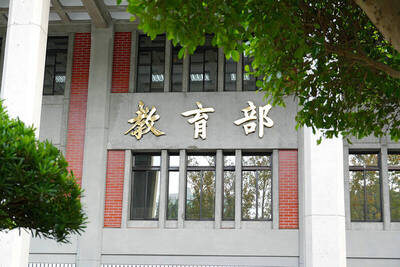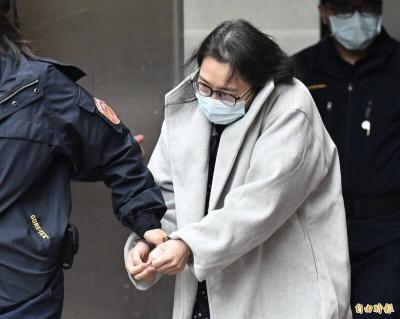Taipei Times: In your speech, you used the ‘Titanic’ crashing into an iceberg as a metaphor for the problem of climate change. Can you give an estimate as to when the crash would happen?
Steven Chu (朱棣文): It’s a gradual crash. We have already seen a substantial change in climate, sea level rising, the melting of glaciers all over the world … The heat is bleaching coral at a faster rate, the number of forest fires has increased, so you can go down the list of things that are related to increases in heat and melting of polar caps … The Tibetan plateau and the Himalayas actually feed water to many of the major river basins around the world, like the Ganji River, the Yellow River … [Polar caps are] melting at a rate more than 1m in thickness a year now, but because it stretches over millions and millions of square miles [kilometers], it means a lot of water. I’ve heard stories where in India the Ganji water level has risen, it always goes up and down but the average level has risen to the point where it displaces people who live around the water, and they’ve become refugees.
This is predicted to accelerate. Pine forests in the US and Canada are dying. When the forests die we’re very exposed to floods because the mountainsides no longer have trees, and if it rains then there’s a lot of erosion.
In California and many places around the world, the moisture’s kept in the mountains by trees and snow and if you don’t have snow or trees, what happens during the wet season is you have floods, and instead of a continuous supply of water you would get floods and droughts. We’ve begun to see these effects in the last decade, and the predictions are it’s going to get much, much worse.
TT: So what are our options?
Chu: We want it to be bad, but not awful. In order to keep it at just “bad,” we have to immediately start decreasing the amount of energy we use. That doesn’t necessarily mean that everybody doesn’t heat their homes or turn on air conditioning.
For example, the lighting in this building doesn’t really have to be as bright as it is.
TT: How can we use energy more efficiently?
Chu: It turns out that most people don’t understand how to build buildings. The reason I say that is because there is a major US company called United Technologies, they make air conditioning, building control systems, elevators, helicopters, jet engines … They’re a very high-tech company.
In one of their buildings — a high-rise building maybe 50 stories high — the architect changed the window and did things in such a way that it became impossible to cool the upper 15 stories of the building below 85 degrees [Fahrenheit, 29.4ºC]. So they had to do a lot of re-engineering, but the design architects and the structural engineers weren’t really talking to one another and didn’t fully understand the airflow patterns. Usually people keep the airflow pattern very simple, there’s an inlet and an outlet and you just force the airflow to happen, but forcing it could also be fighting against natural convection and the natural design of the building, making it much more energy-intensive.
TT: Are energy-efficient buildings more expensive to build than regular ones?
Chu: Energy-efficient buildings will pay for themselves. For example, if you have a building with a flat roof, and you make the roof white, such as using white pebbles instead of dark ones, depending on the shape of the building, you can be reducing 10 [percent] to 20 percent of the air conditioning load.
There’s a recently published paper from people in our laboratory that says, if you take only the city buildings that have flat-topped roofs and make them light-colored, and make the roads light-colored by using cement, the amount of carbon dioxide decreased is equivalent to taking all the cars in the world [carbon emission] and turning them off for 10 years.
Rooftops don’t cost much money, and it saves on air conditioning, as well as reflects the light back from where it came from. These are things which we should be doing today. It’s actually pure ignorance.
The architects fought against this for a while, because they felt that nobody should tell them what color their roofs should be, even though you can’t see the roof, by the way. Having a white roof will not dramatically alter your lifestyle. If you have white roofs and lighter colored pavement, you will notice the cities becoming cooler. Cities are much hotter than in the countryside during the summer, because they’re absorbing all this energy and also generating energy from air conditioning. So we should be doing this a few years from now.

The Ministry of Education (MOE) is to launch a new program to encourage international students to stay in Taiwan and explore job opportunities here after graduation, Deputy Minister of Education Yeh Ping-cheng (葉丙成) said on Friday. The government would provide full scholarships for international students to further their studies for two years in Taiwan, so those who want to pursue a master’s degree can consider applying for the program, he said. The fields included are science, technology, engineering, mathematics, semiconductors and finance, Yeh added. The program, called “Intense 2+2,” would also assist international students who completed the two years of further studies in

Former president Tsai Ing-wen (蔡英文) departed for Europe on Friday night, with planned stops in Lithuania and Denmark. Tsai arrived at Taiwan Taoyuan International Airport on Friday night, but did not speak to reporters before departing. Tsai wrote on social media later that the purpose of the trip was to reaffirm the commitment of Taiwanese to working with democratic allies to promote regional security and stability, upholding freedom and democracy, and defending their homeland. She also expressed hope that through joint efforts, Taiwan and Europe would continue to be partners building up economic resilience on the global stage. The former president was to first

Taiwan will now have four additional national holidays after the Legislative Yuan passed an amendment today, which also made Labor Day a national holiday for all sectors. The Chinese Nationalist Party (KMT) and Taiwan People’s Party (TPP) used their majority in the Legislative Yuan to pass the amendment to the Act on Implementing Memorial Days and State Holidays (紀念日及節日實施辦法), which the parties jointly proposed, in its third and final reading today. The legislature passed the bill to amend the act, which is currently enforced administratively, raising it to the legal level. The new legislation recognizes Confucius’ birthday on Sept. 28, the

The Taipei District Court sentenced babysitters Liu Tsai-hsuan (劉彩萱) and Liu Jou-lin (劉若琳) to life and 18 years in prison respectively today for causing the death of a one-year-old boy in December 2023. The Taipei District Prosecutors’ Office said that Liu Tsai-hsuan was entrusted with the care of a one-year-old boy, nicknamed Kai Kai (剴剴), in August 2023 by the Child Welfare League Foundation. From Sept. 1 to Dec. 23 that year, she and her sister Liu Jou-lin allegedly committed acts of abuse against the boy, who was rushed to the hospital with severe injuries on Dec. 24, 2023, but did not